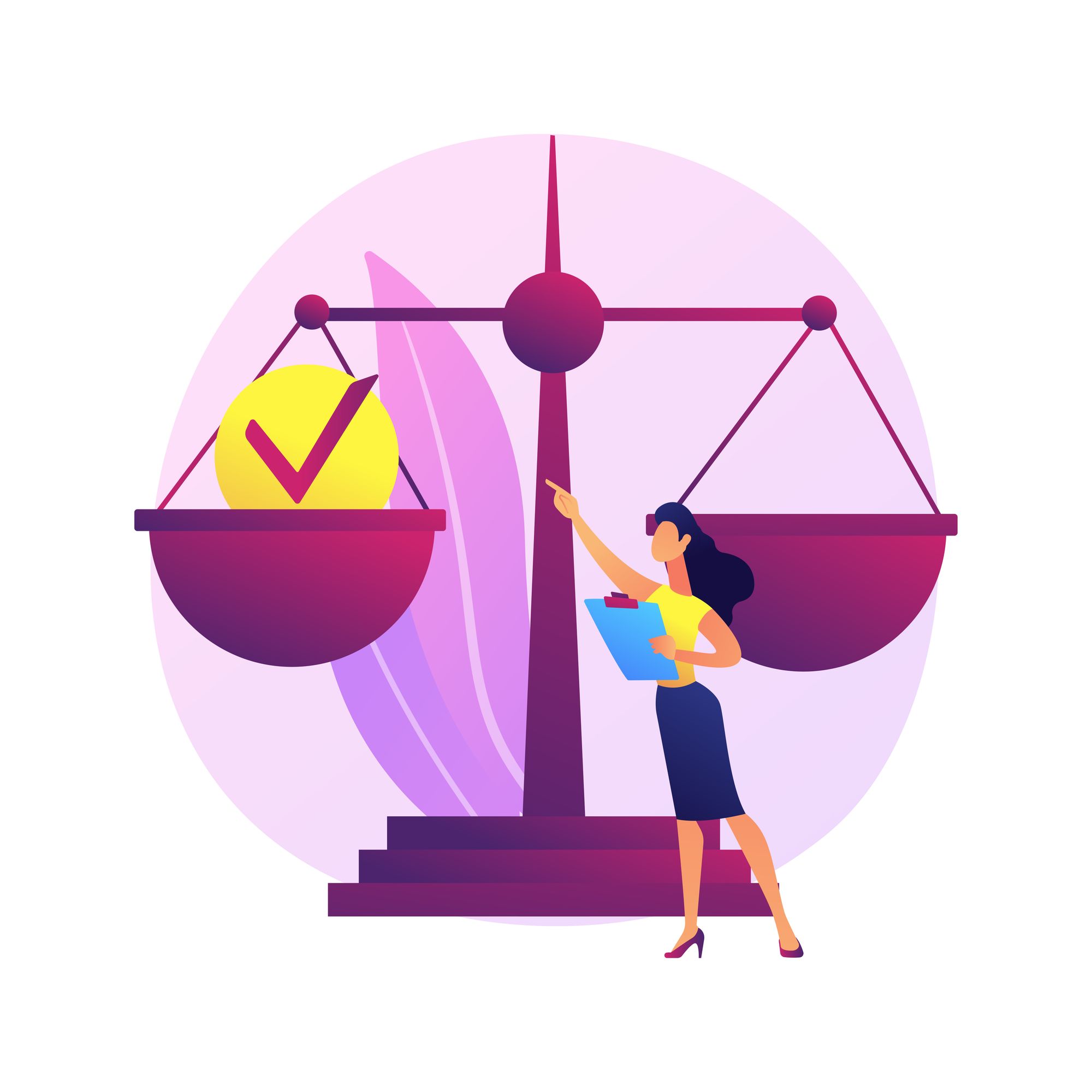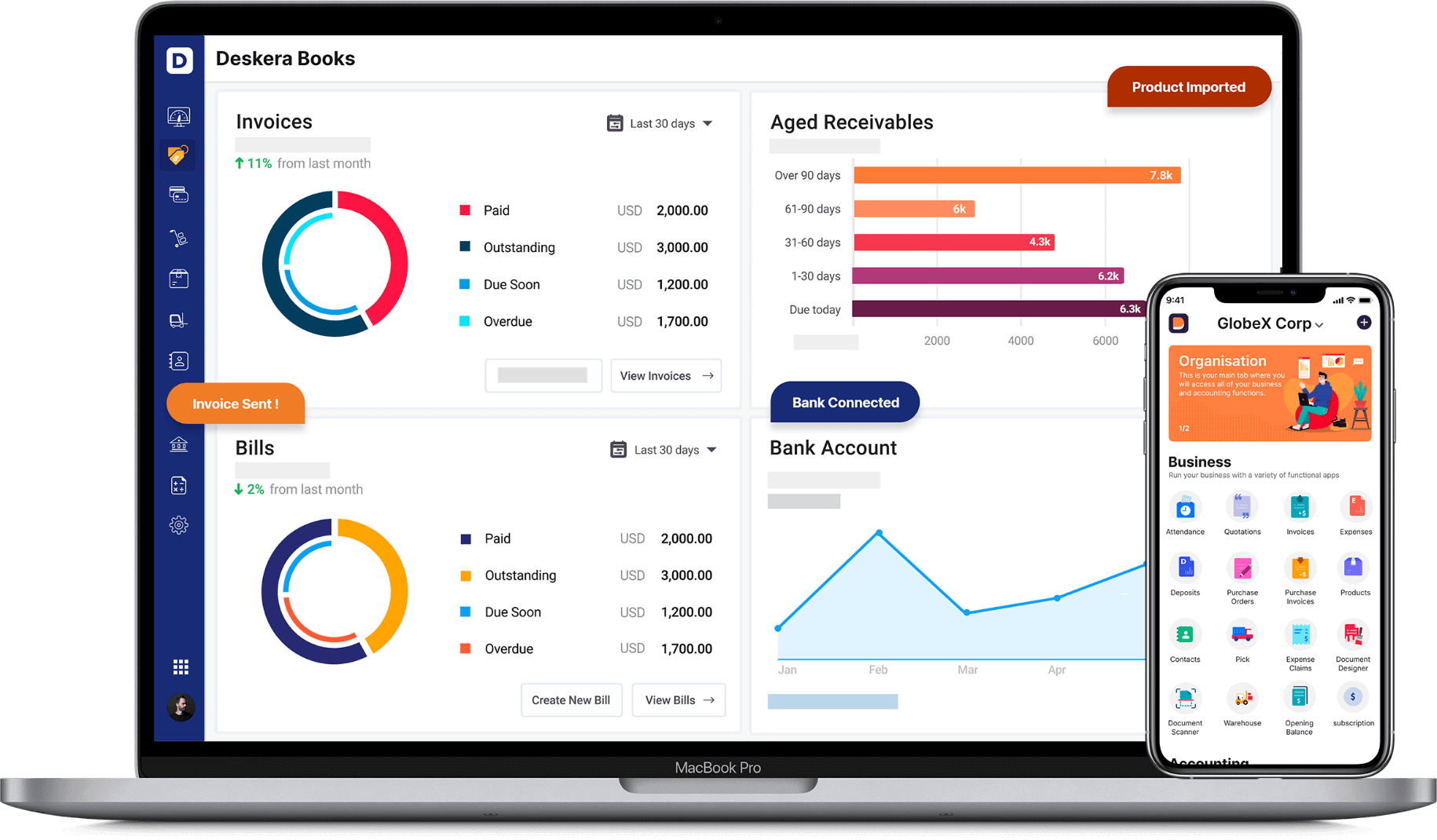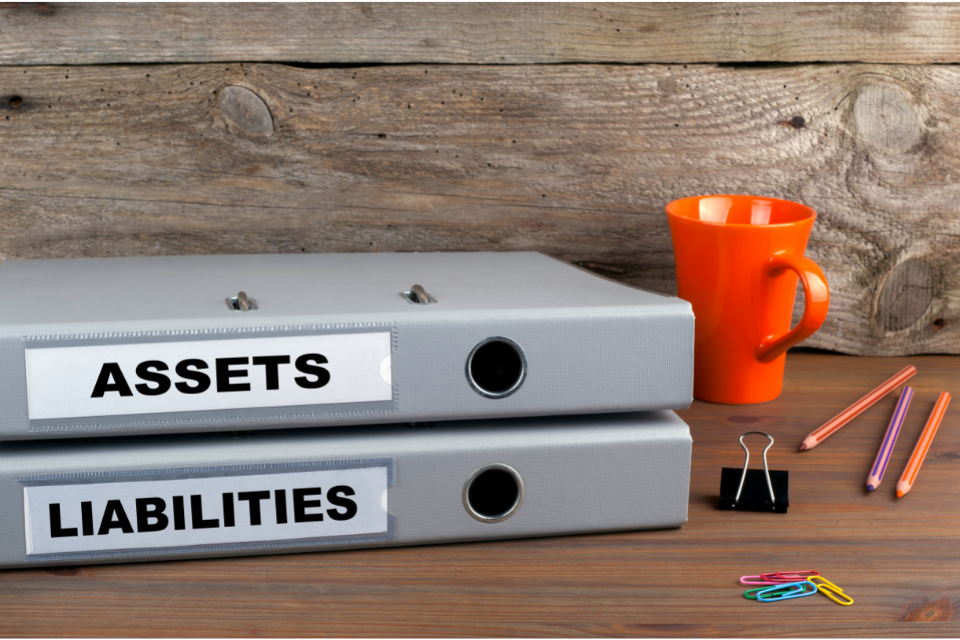A company’s balance sheet comprises two aspects - assets and liabilities. They form a picture of a business's financial standing and help ascertain its stability and viability.
Individuals dealing with assets and liabilities should possess a comprehensive understanding of these concepts and the critical differences to manage them effectively.

What are Assets & Liabilities?
In simple words, assets are what a business owns, and liabilities are what it owes. The balance sheet lists both assets and liabilities, and the difference between the two equals equity, the net worth of the business. In accounting, receivables are categorized as assets, while payables are listed as liabilities.
Another way to deal with assets and liabilities is to categorize them based on profit and loss. For example, investments that result in profit are generally listed under assets, while expenses or losses are classified as liabilities.
Assets
Assets are everything a company owns. The term refers to resources that help generate revenue, increase the company’s equity and add value to the business.
All the receivables are classified as assets. These resources enhance the company’s profitability, help reduce expenses and create cash flow by converting into cash or cash equivalents.
As assets hold economic value, they can be exchanged or sold. As a result, they are generally put on the left on the balance sheet. As a result, the value of assets is calculated as the sum of the total owner’s equity and liabilities.
Liabilities
The term liabilities refers to everything a company owes, at present and in the future. It includes all the accounts' payables and any other expenses and losses.
In other words, liabilities are defined as a company’s financial obligations. They generally play a crucial role in financing an entity’s expansion and ensuring smooth working of day-to-day commercial operations.
Based on the type of business, liabilities are either limited or unlimited. Limited liabilities are where the owner is not entirely obligated to pay off, whereas total liabilities are the sole obligations of the business owner.
The liabilities of an entity are typically put on the right of the balance sheet. It is expressed as the difference between total assets and equity.
Types of Assets and Liabilities
Let us understand the various types of assets and liabilities found in entities involved in commercial practices.
Assets
Assets are broadly classified based on three main criteria:
- First, convertibility – They are categorized as fixed or current assets depending on how convertible they are.
- Physical Existence – Assets can be either tangible or intangible.
- Purpose – Based on the purpose or application, assets are classified as operating and non-operating.
Current or Short-Term Assets
These assets can be quickly transformed into cash or cash equivalent. Examples of current assets include inventory, cash, accounts receivables, short-term deposits, and investments.
A business with more current assets has the edge over others as it can survive longer without borrowing.
Fixed or Long-Term Assets
Resources that are not easily converted into cash or cash equivalent are called fixed assets. These are physical items that last for over a year but provide no financial value.
Examples include computer equipment, land, trademarks, machinery, tools, etc.
Tangible Assets
Assets that possess a physical existence are classified as tangible assets. Physical resources such as machinery, equipment, vehicles, land, stock, and building are some of the best examples of tangible assets.
Intangible Assets
Those who don’t possess a physical existence but still have financial value instead of tangible assets fall under the intangible category.
Intellectual property, market goodwill, permits, patents, copyrights, brand recognition, etc.
Operating Assets
Such assets are generally used to maintain everyday business operations and generate revenue.
The best examples of operating assets are machinery, cash, stock, equipment, goodwill, copyright, etc.
Non-Operating Assets
Though not utilized in daily business operations, non-operating assets help generate considerable revenue.
Short-term investments, income made from fixed deposits, and vacant land are typical non-operating assets.
Liabilities
In any commercial setting, liabilities are categorized into internal and external.
Internal Liability – Includes obligations like accumulated salaries and profits, capital, and others
External Liability – Consists of payable such as borrowings, taxes, creditors, and overdrafts
Liabilities are further divided into three categories based on their function:
Current Liabilities
Current or short-term liabilities are debts and obligations which should be paid off within a year. They represent capital owed for operating expenses like taxes, wages, and accounts payable.
Moreover, payments owed within a year for long-term debts are also listed under current liabilities.
For example, if a company has a 20-year mortgage loan on a property, the payment owed in the next year will be listed under short-term liability. At the same time, the remaining balance is put under long-term liabilities.
Non-Current Liabilities
Also known as long-term or fixed liabilities, non-current debts are not accounted for within a year.
These debts and obligations form a critical part of a company’s long-term financing. Businesses generally incur these liabilities to fund the purchase of assets or invest in new projects.
Examples include bonds payables, mortgage payables, debentures, and long-term loans.
Contingent Liabilities
These are the potential obligations whose occurrence depends on some future event. For example, if a company faces a lawsuit of $200,000, it would incur liability only if the lawsuit becomes successful. If the lawsuit is not successful, no liability arises. Therefore, such liability is recorded only if it has a probability.
Examples of contingent liabilities include a claim against warranty, lawsuits, and loan guarantees.
Assets & Liabilities Examples
To understand the company’s financial standing, any business owner should be able to classify assets and liabilities well. So let us look at a few examples of businesses and list their assets and liabilities.
House Painting Business
Assets – painting equipment, van, bank savings, printer, painting contracts, computer
Liabilities – taxes, van loan, painting supplies purchased on credit, payroll payable to the staff
Hot Sauce Maker
Assets – equipment and machinery used to make hot sauce, inventory, desktop computer, building that houses the business, pending payment from a grocery store selling the sauce
Liabilities – an outstanding bill for ingredients, mortgage loan on the building, sales tax not yet paid, payroll not yet cleared
A Freelance Writer
Assets – printer, laptop, pending payments from clients, cash in the bank account
Liabilities – unpaid internet bill, outstanding credit card balance for buying a laptop, sales tax not yet paid

Relationship Between Assets & Liabilities
As assets and liabilities are vital components for gauging the financial standing, owners must know how to manage them well.
This requires an understanding of the relationship between the two. In general, achieving a balance between the proportion of assets and liabilities is key to ensuring profitability.
Further, an understanding of the company’s ability to manage internal and external liabilities and convert assets into cash is also crucial.
Assets and liabilities are also useful indications of a company’s liquidity – how effectively it converts resources into cash. This can be quickly done by considering some essential financial ratios based on the relationship between these components.
For example, the current ratio helps determine how capable a company can clear off existing debts.
Current Ratio = Current Assets / Current Liabilities
A business venture with a high proportion of assets than liabilities signals higher liquidity, indicating that the company is profitable and thrives under the current situation.
One can also use assets and liabilities to measure a company's outstanding debt. The debt ratio is an effective way to calculate the total assets funded by debts. It is calculated as:
Debt Ratio = Liabilities / Assets
Assets and liabilities can also be used to determine the value of the owner’s equity. It is generally expressed as the difference between total assets and liabilities at any time.
Owner’s Equity = Assets – Liabilities
These relationships between assets and liabilities suggest that they are crucial for measuring a company’s liquidity and debt repaying ability. Therefore, these components are valuable for investors looking to gather information about a company before investing in it.
Difference Between Assets & Liabilities
One of the primary differences is that assets attract a financial benefit, whereas liabilities denote a future obligation.
Assets add to the value of the business and increase its equity, while liabilities reduce the value and equity. Both are opposite in meaning – assets refer to incoming deals and valuable items while liabilities stand for outward deals and business transactions.
A high proportion of assets to liabilities indicates good financial health and a successful business. A business should possess more assets than liabilities to clear debts. If there are more liabilities than assets, the company may fail to pay off debts and fall into financial trouble. However, liabilities have their role as they help finance a business’ growth.
For example, credit taken to buy new equipment for a business is a liability, but the tools will help the company grow, which is a good thing. The key is to ensure liabilities don’t get bigger than assets.
It is also essential to determine the ability of the business to convert assets into cash. Even when there are more assets than liabilities, a company may not meet obligations on time if its assets cannot be converted quickly into cash.

Final Thoughts
As a business owner, balancing your books is one of your main goals. It would be best if you had a solid understanding of assets and liabilities to categorize your resources and debts, evaluate your business's financial health, and make informed decisions.
Once you understand the terms, it becomes easier to know where your company stands, and your financial reports become more meaningful.
How can Deskera Help You?
Deskera Books can help you automate your accounting and mitigate your business risks. Creating invoices becomes easier with Deskera, which automates a lot of other procedures, reducing your team's administrative workload.

Learn about the exceptional and all-in-one software here:
Key Takeaways
- Assets and liabilities are the two categories of a balance sheet. Assets showcase items that can provide future economic benefits, whereas liabilities are items that are owed to others
- Together, the assets and liabilities provide a statement of financial position to be used by investors, lenders, suppliers, and managers
- Assets include fixed assets or long-term assets, which comprise of real estate, equipment, vehicles, etc, which cannot be easily liquidated. Current assets comprise of cash, marketable securities, and receivables that can be converted into cash fairly quickly
- Similarly, liabilities are categorized into current, and non-current liabilities. Current liabilities are debts or payables that an organization is liable to pay over a short duration of time, whereas non-current liabilities are long-term debts such as secured notes with maturities longer than a year
- Assets and liabilities give rise to numerous ratios and financial metrics that are of great use for investors and management in ascertaining the financial health, liquidity and risk metrics of a company
Related Articles










